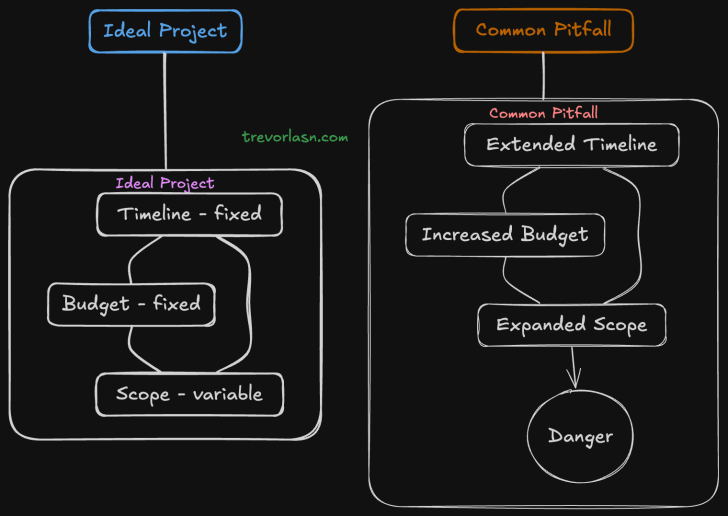Think of your project as a box. The length is your timeline, the width is your budget. These are fixed. The only thing you can change is the height - that’s your scope.

Most teams try to cram more into the box. They work overtime, hire more devs, or cut corners on quality. But here’s the kicker: it rarely works. The box just gets more expensive or takes longer to ship.
Remember how Airbnb started? It wasn’t a full-fledged platform. It was just a way for the founders to rent out air mattresses in their apartment. They didn’t wait to build a global network - they started with one bedroom.
That’s the mindset we need. What’s your “bedroom”? What’s the smallest version of your product that still delivers value?
The Art of Scope Sculpting
Instead of cramming more into our project box, we need to sculpt. Think of it like Michelangelo approaching a block of marble. He didn’t add more stone; he chipped away until David emerged.
Here’s how we can apply this to software projects:
- Prioritize ruthlessly: List every feature, then force yourself to rank them. No ties allowed. Be brutal - what truly matters for launch?
- Define the MVP: Draw a line. Everything above it is in, everything below is out - for now. Remember, this isn’t your final product; it’s your launchpad.
- Time-box development: Give each feature a strict time limit. If it’s not done when time’s up, move on. Perfection is the enemy of done.
- Embrace ‘good enough’: Ask yourself, “Will users still find value if we simplify this feature?” Often, the answer is yes.
I once worked on a project where we cut our feature list in half two weeks before launch. Scary? You bet. But we shipped on time, and you know what? Users loved the streamlined experience. We added complexity later, guided by real user feedback instead of our assumptions.
Every ‘no’ to a feature request is a ‘yes’ to shipping on time. It’s not about doing less; it’s about starting sooner and iterating based on real-world use.
Spotify didn’t start with a full-fledged music streaming platform. Their initial release in 2008 was just a desktop app with basic playback features. They focused on creating a smooth, fast experience for playing music, and gradually added features like playlists, social sharing, and mobile apps over time.
When Amazon launched in 1995, it only sold books. Jeff Bezos chose books because they were easy to source and ship. This laser focus allowed Amazon to perfect its e-commerce model before expanding to become “The Everything Store” we know today.
Instagram started as Burbn, a check-in app similar to Foursquare. The founders noticed users were mainly using the photo-sharing feature, so they stripped away everything else. This radical scope reduction resulted in the Instagram we know today.
In its early days, Zappos didn’t have a sophisticated inventory system. Founder Nick Swinmurn would go to shoe stores, take pictures of shoes, and post them online. When an order came in, he’d go back to the store, buy the shoes, and ship them. This manual process allowed Zappos to test the market before investing in complex systems.
When Google launched, its homepage was starkly simple compared to portal competitors like Yahoo. This focus on fast, accurate search results, without the clutter of news and weather, helped Google dominate the search market.
As you approach your next project, ask yourself:
- What’s the core problem I’m solving?
- What features are absolutely essential for launch?
- What can wait for version 2.0?
Scope management isn’t about doing less. It’s about doing what matters most, right now. It’s about getting your product into users’ hands faster, learning from real feedback, and iterating based on actual needs rather than assumptions.